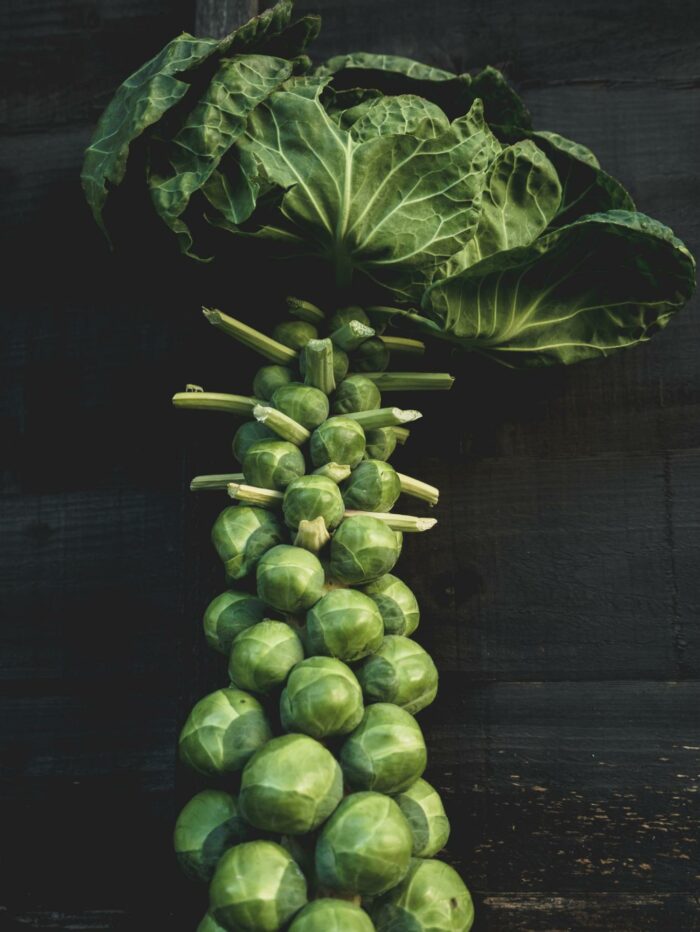For Pennsylviania Farmers, the word “Brassicas” is a regular player in our working dictionary of botany terms and tractor parts. Brassicas this, and Brassicas that. It’s a fun word to say and is particularly useful because it describes a large group of crops Pennsylvania farmers grow. Seeing as you’re reading a farm blog right now, chances are you’re a lover of seasonal vegetables and a locavore, too. Does “Brassica” roll off your tongue with the confidence of a vegetable farmer? We think it should. Read on and you’ll realize that you already know these cruciferous vegetables. If you’re eating from a CSA Program or visiting a roadside farmstand, big and baby Brassicas alike have no doubt been on your plate more often this season than not.
Brassica is a genus of plants in the mustard family, or Brassicaceae in Latin, whose members are informally referred to as cruciferous vegetables. The Brassica family contains many species and subspecies, several of which are responsible for growing some of the world’s most important agricultural crops. Brassicas love the temperate weather, making them a spring and summer crop here in the northeast. Our moderate summers mean that we can grow brassicas throughout almost the entire growing season.
So what the heck actually are Brassicas? The list of cruciferous vegetables Pennsylvania farmers can grow is long: kohlrabi, brussels sprouts, cabbages (all of them), broccoli, cauliflower, romanesco, turnips, horseradish, wasabi, bok choy, kale, collards, mustard greens, radishes, watercress, rutabaga, arugula, and all the diverse and specialty versions of those things you see on roadside stands throughout the state. Did we forget one? Maybe… Brassicas rule over most crop plans with a partisan authority. Each one of these distinct but closely related vegetables was bred over the course of around 10,000 years by enterprising farmers all over the world, making Brassicas one of the oldest cultivated crops we know of.

Perhaps the most fascinating species of Brassica is that of Brassica oleracea, which has undergone several rounds of domestication selection, all stemming (get it?) from the same wild progenitor. If you’re interested in a botanical deep dive of this species, check out this blog post titled “The extraordinary diversity of Brassica oleracea” by Jeanne L. D. Osnas, a Ph.D. plant ecologist and evolutionary biologist. Jeanne writes, “Some species have undergone the domestication process multiple times, and with some of these species, each domestication effort has focused on amplifying different structures of the plant…Such is the case with Brassica oleracea. The wild plant is a weedy little herb that prefers to grow on limestone outcroppings all around the coastal Mediterranean region. It is a biennial plant that uses food reserves stored over the winter in its rosette of leaves to produce a spike of a few yellow flowers at the end of its second summer before dying.”

Get ready to have your mind blown. Brassica oleracea makes up many of our state’s most beloved vegetables including: red and green cabbage, broccoli, cauliflower, romanesco, Brussels sprouts, collards, kales, Savoy cabbage, and kohlrabi. Have you ever marveled at how Brussels sprouts just look like tiny cabbages? Or noticed that kohlrabi leaves taste a lot like collards? Deep down, you know that broccoli and cauliflower are intimately connected, but why does it all feel so familiar? It’s because they’re all the same plant! Check out the nifty chart below for a refresher on exactly what part of Brassica oleracea was selected to yield some of your favorite spring veggies.

The state is literally brimming in Brassicas right now, and each and everyone has an interesting evolution from a wild mustard weed blowing in the wind to a starchy root crop (turnip) or spicy leaf (arugula) or a bouquet of buds (broccoli). To find your very own Pennsylvania brassicas, make sure to check out our farmstand or our CSA directory by clicking the link here.
